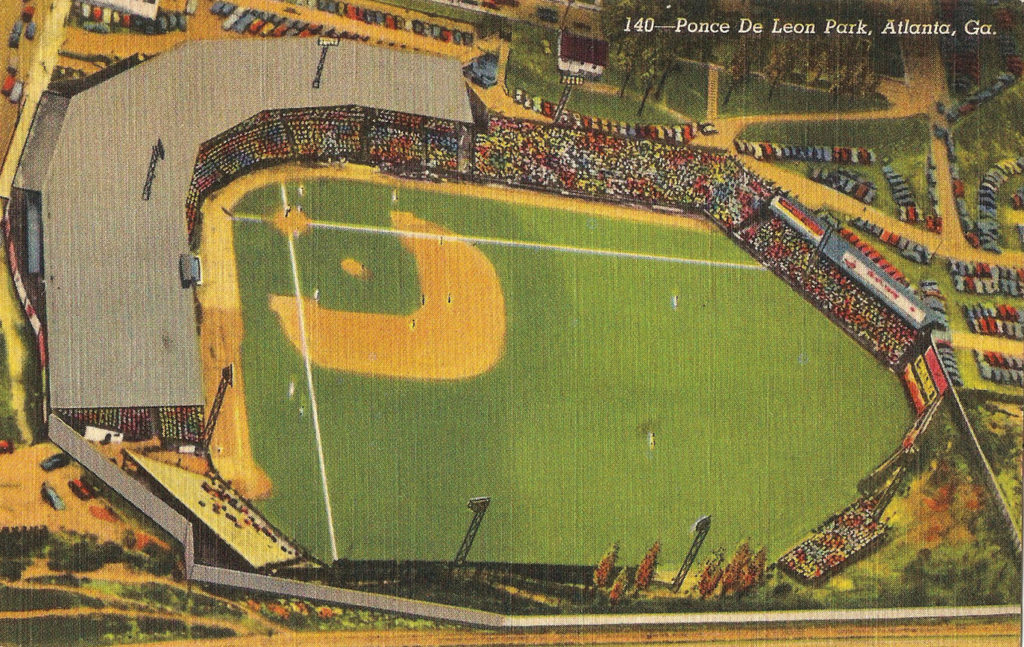
Michael Bushnell
Publisher
This week we make a stop in Atlanta, Georgia for a look at the iconic Ponce de Leon Park, home of the Atlanta Crackers and the Atlanta Black Crackers.
The Atlanta Black Crackers were founded in 1919 as the Atlanta Cubs, a semi-pro team of Black college students.
The team joined the Negro Southern League (NSL) in 1920 and adopted the name Black Crackers after the white ball club, the Atlanta Crackers of the Class A Southern Associate, playing in Atlanta at the time.
The original ballpark opened in 1907 and was located at 650 Ponce de Leon Avenue.
A fire destroyed the park in 1924 and it was rebuilt by Atlanta Cubs owner R. J. Spiller who renamed the park after himself.
It was then reverted back to its original name in 1933.
Both teams played at Ponce de Leon field but the Black Crackers could not play there when the white Crackers had a home game there.
Morehouse College and Morris Brown College were used when home game schedules conflicted for the teams.
Between 1922 and 1925, the Black Crackers played an independent barnstorming season rather than competing in league play.
If you’ve ever watched the 1976 baseball classic, ‘The Bingo Long Traveling All-Stars & Motor Kings,’ you’ll get a good idea of what a barnstorming schedule was like.
In 1926 the NSL regrouped and the Black Crackers played for two seasons, returning to barnstorming in 1929.
The team bounced between league play and barnstorming for most of the 1930s.
By 1932, the Great Depression had decimated the profits of most Negro league teams and only a few organized Negro leagues survived.
In 1938, they were invited to play in the Negro American League, finishing first place in the second half of the season.
Controversy with scheduling and umpires caused the championship game against the Memphis Red Sox to be canceled.
An interesting note about Ponce de Leon Park is that it was built with a Magnolia tree in deep center field.
If a ball was hit into the tree, it remained in play. It is said Babe Ruth hit a home run that got stuck somewhere in that tree.
The park was demolished in 1965 in favor of a shopping center that has since been demolished.
The Magnolia tree remains a part of the landscape, however, along the BeltLine trail.



















